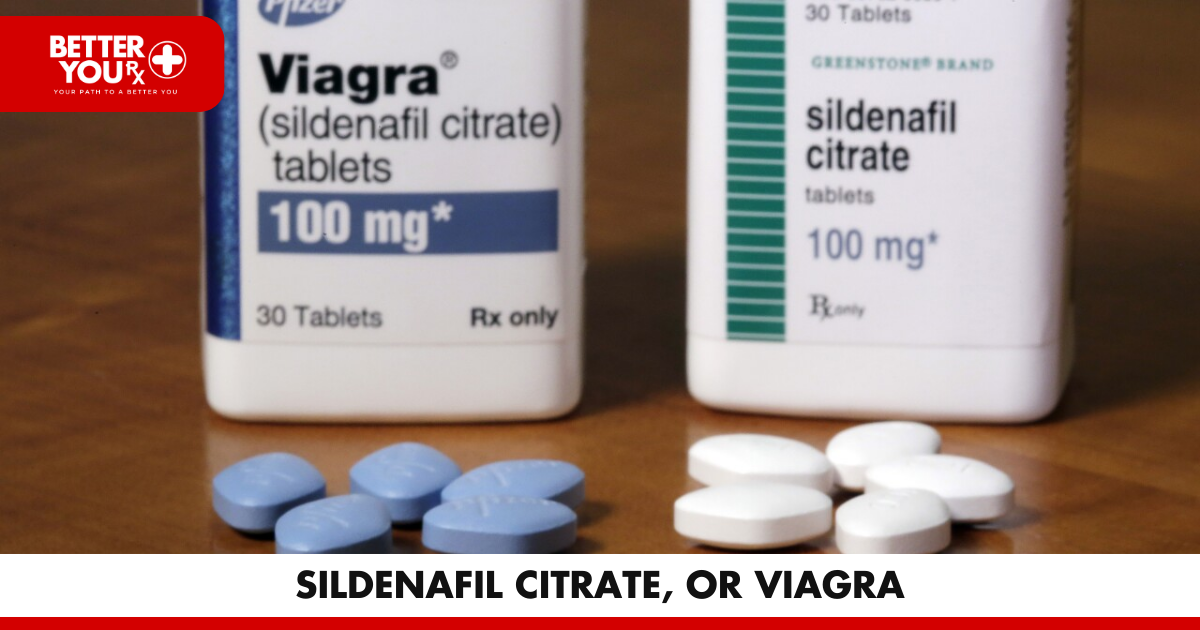Numerous overweight and obese Americans have found success in their weight loss efforts because of the Type 2 Diabetes drug Ozempic, which was approved by the Federal Health Authority in 2017. However, it doesn’t operate on its own.
Ozempic is most successful when used in conjunction with healthy lifestyle modifications including diet and exercise, but what does this actually mean? What foods should you stock your refrigerator and pantry with before injecting your first dosage of Ozempic (semaglutide) in order to feel your best and get the best results from weight loss?
In this article, we’ll look at the dos and don’ts of eating while on Ozempic. We’ll talk about how to minimize adverse effects, increase healthy muscle mass, and maximize weight loss.
Each patient will have a different experience with Ozempic, while a balanced diet can play a significant and advantageous role. This article’s information is not meant to be a substitute for or a substitute for medical advice. Speak with your main healthcare physician immediately if you have any specific inquiries about your diet while taking Ozempic.
Main Points
A Type 2 Diabetes drug called Ozempic (semaglutide) is occasionally used off-label for weight loss promotion.
Ozempic works best when combined with lifestyle modifications like regular exercise and a nutritious diet.
Foods high in protein, fresh fruits and vegetables, whole grains, nuts, legumes, and other healthy fats are all advised to consume when taking Ozempic. Foods that are fatty, sweet, or heavily processed should be avoided.
Your personal physician or other healthcare provider is your greatest source if you have particular inquiries about what you should consume while participating in Ozempic.
Ozempic: What Is It?
The brand-name medication Ozempic has received approval for the management of Type 2 Diabetes in adults. It is made in Denmark by Novo Nordisk and controls blood sugar levels while also causing medically relevant weight loss in both Type 2 Diabetes patients and non-Patients.
Despite the fact that Ozempic is not approved for weight loss, Wegovy, its sibling medication, has been since 2021. Wegovy is recommended for use in obese adults and adolescents as well as overweight individuals with at least one weight-related health problem (such as high blood pressure, cardiovascular disease, or PCOS). Wegovy contains semaglutide, the same active component as in Ozempic (although at a greater dose). If a doctor decides that prescribing Ozempic off-label for weight loss is the best course of action for a particular patient, it may be done.
Wegovy and Ozempic are both injectable medicines that should be given once a week. They are administered subcutaneously into the thigh, upper arm, or abdomen using single-patient use injection pens that are prefilled with medication.
How Does Ozempic Function?
Semaglutide, the active ingredient in Ozempic, mimics a hormone that develops in the human intestine after eating. Ozempic belongs to the group of drugs known as GLP-1 receptor agonists since this hormone is also known as glucagon-like peptide 1 (GLP-1).
When semaglutide binds to GLP-1 receptors, it triggers responses throughout the body. These include the production and release of insulin from the pancreas, the inhibition of glucose release from the liver, and the slowing of gastric emptying (the speed at which food is released from the stomach into the small intestine to be digested).
Slowing the digestive process is one of the primary ways Ozempic promotes weight loss—when food moves slowly through your digestive tract, you feel fuller for longer. It also reduces cravings and hunger pangs as well as helps you to feel satiated (full) after eating smaller portions of food.
Who Qualifies for the Ozempic?
Adults with Type 2 Diabetes who are having trouble controlling their blood sugar levels are candidates for treatment with Ozempic. If your doctor feels that prescribing Ozempic off-label exclusively for weight loss is your best course of action, they might do so.
Who Is Not a Good Fit for Ozempic?
Ozempic should not be used by patients who:
- Are attempting to conceive, pregnant, or breastfeeding
- Suffer from Type 1 Diabetes
- Are under the age of 18
- Have thyroid cancer in your family or in your own body.
- Have a semaglutide or other component in Ozempic allergy
- Have a history of pancreatitis, kidney illness, liver disease, gallbladder disease, or diabetic retinopathy.
Which Meals Can I Have While Taking Ozempic?
While taking Ozempic, no particular meals must be taken or avoided. But that doesn’t negate the significance of your food decisions.
Eating well can help regulate blood sugar levels and help you lose weight in general, and it can help even more if you’re on Ozempic. Eating a balanced diet is important to get the best weight reduction outcomes and feel your best while taking the medication. The four food groups listed below are ones you should prioritize:
Protein-Rich Foods
Your energy, healthy muscle growth, tissue repair, immune system function, and blood sugar regulation all depend on consuming foods high in protein. Although we frequently associate proteins with animal products, there are also many plant-based protein choices.
Consider a few of the following:
- Lean poultry and meats
- Fish
- Lentils with beans
- Quinoa
- Dairy goods low in fat, such as yogurt, cheese, and cottage cheese
- Eggs
- Tofu
Fruits and vegetables that are low in sugar
Any healthy diet must include fresh produce, but not all fruits and vegetables are made equal. When on Ozempic, try to eat as many non-starchy veggies and low-sugar fruits as you can.
Good choices consist of:
- Leafy greens (kale, arugula, and spinach)
- Berries, citrus fruits, stone fruits, bananas
- Asparagus, tomatoes, celery, carrots, broccoli, peppers, onions, and peppers
Full Grain
Whole grains provide far greater nutritious content than processed grains, even if they might take a bit longer to cook. Put the following on the menu to welcome complex carbs, fiber, and a variety of vitamins and minerals:
- Barley, oats, farro, and brown rice
- Whole wheat or grain bread
- Whole grain pasta
Legumes, nuts, and other nutritious fats
Although they sometimes get a poor rap, healthy fats are an essential part of a balanced diet. sources consist of
- Nuts
- Legumes
- Seeds
- Fish oils, coconut oil, and olive oil
- Avocados
What Foods Must I Steer Clear Of While Taking Ozempic?
There are no meals that, from a medical perspective, must be categorically avoided while taking Ozempic. However, it is strongly advised against consuming fried, fatty, greasy, and sugary foods. Read our most recent post on the subject for more details regarding foods to stay away from while taking Ozempic.
Can Certain Foods Make the Side Effects of Ozempic Worse?
One of the most frequent side effects of Ozempic is stomach-related, including nausea, vomiting, diarrhea, and abdominal pain. Consuming greasy, fatty, and fried foods, as well as sugary drinks and snacks, can make people who already have these symptoms worse. Foods that have been heavily processed should also be avoided because they are difficult for the body to digest and break down. Despite these potential side effects, understanding the Ozempic benefits can help individuals weigh the pros and cons and make informed decisions about their treatment options.
Can Particular Foods Help Reverse Particular Ozempic Side Effects?
Crackers, brown rice, and basic soups are a few examples of light, bland, low-fat foods that can help reduce nausea and gastrointestinal pain. Drink lots of water and other clear liquids to stay hydrated, and eat carefully.
Changes in Lifestyle
For weight loss and overall wellness, it’s advised that you incorporate light exercise into your daily routine in addition to consuming a balanced diet. Consider going for daily walks outside, stretching your muscles, and avoiding lying down immediately after eating (fresh air can help with nausea).
Is Ozempic a suppressant of appetite?
Ozempic lessens cravings and helps you feel fuller for longer by slowing down digestion. Even while your hunger won’t go away entirely, the majority of patients discover that it is significantly diminished and that they feel full after only a small percentage of what they used to eat before beginning to take Ozempic.
What Effects Does Ozempic Have on Your Body?
Ozempic has an impact on your body by “tricking” it into acting as if digestion is ongoing at all times. Only in reaction to eating does the body normally release the hormone GLP-1, but semaglutide stays in the body 24 hours a day. This results in:
- The pancreas produces and releases insulin.
- A decrease in the liver’s release of sugars
- Delays in digestion and gastric emptying
Additional Mistakes To Avert While Taking Ozempic
To get the most out of Ozempic, pay attention to your body. Change your behaviors if you find that eating certain foods, eating at particular times, or eating in a certain way makes you uncomfortable. Speak with your doctor or pharmacist directly if you have any specific questions.
Alcohol consumption
Even if it is not necessarily dangerous to drink a little alcohol while taking Ozempic, it is best to talk with your doctor before making this decision. If you should drink alcohol while taking Ozempic depends on a number of factors, including your medical history, any other medications you may be on, and how much alcohol you regularly consume. Ozempic and alcohol information can be found here.
How Do Other Drugs And Ozempic Interact?
In general, most medicines and Ozempic are safe together. In light of this, it’s crucial to tell your doctor about all of your current drugs, including over-the-counter medicines, before beginning Ozempic. If there might be any adverse interactions, only your doctor can make that determination.
Using Ozempic Along With Other Diabetes Drugs
Patients frequently take Ozempic along with other Type 2 Diabetes treatments, with insulin being the most popular combination. The main danger of taking the two drugs at once is low blood sugar, so blood sugar levels must be carefully and often checked. Read more here, then heed the advice of your main healthcare practitioner or physician.
Can I Take Vitamins or Supplements While Receiving Ozempic Treatment?
Yes, in most cases. But before beginning to take any supplements or vitamins, talk to your doctor as you would with any other prescription, especially if you think they might affect your blood sugar levels.
Taking Ozempic With Caution
Ozempic should only be used in accordance with a doctor’s prescription, and any possible responses or adverse effects should be closely observed. Semaglutide, an approved prescription drug, must always be acquired from a trustworthy pharmacy or pharmaceutical service with a current medical prescription.
Conclusion
In conclusion, Ozempic (semaglutide) is a Type 2 Diabetes drug that is occasionally used off-label for the promotion of healthy weight loss. Ozempic works best for weight loss when combined with exercise and a balanced diet. A diet high in lean proteins, low-glycemic fruits and vegetables, whole grains, and healthy fats can help people lose weight more quickly, experience fewer side effects overall (mostly gastrointestinal problems), and be healthier overall.
Discover the synergy between science and lifestyle at Better You Rx Pharmacy. We believe that a balanced diet is key to maximizing the benefits of Ozempic, and our expert team is here to assist you in making the right dietary decisions.
Your health is our priority, and our commitment goes beyond prescriptions. Choose Better You Rx Pharmacy for personalized care that empowers you to embrace a healthier, more fulfilling life. Your journey to wellness begins with us. Place your order today and experience the Better You difference – your prescription, your choice, your better future.










